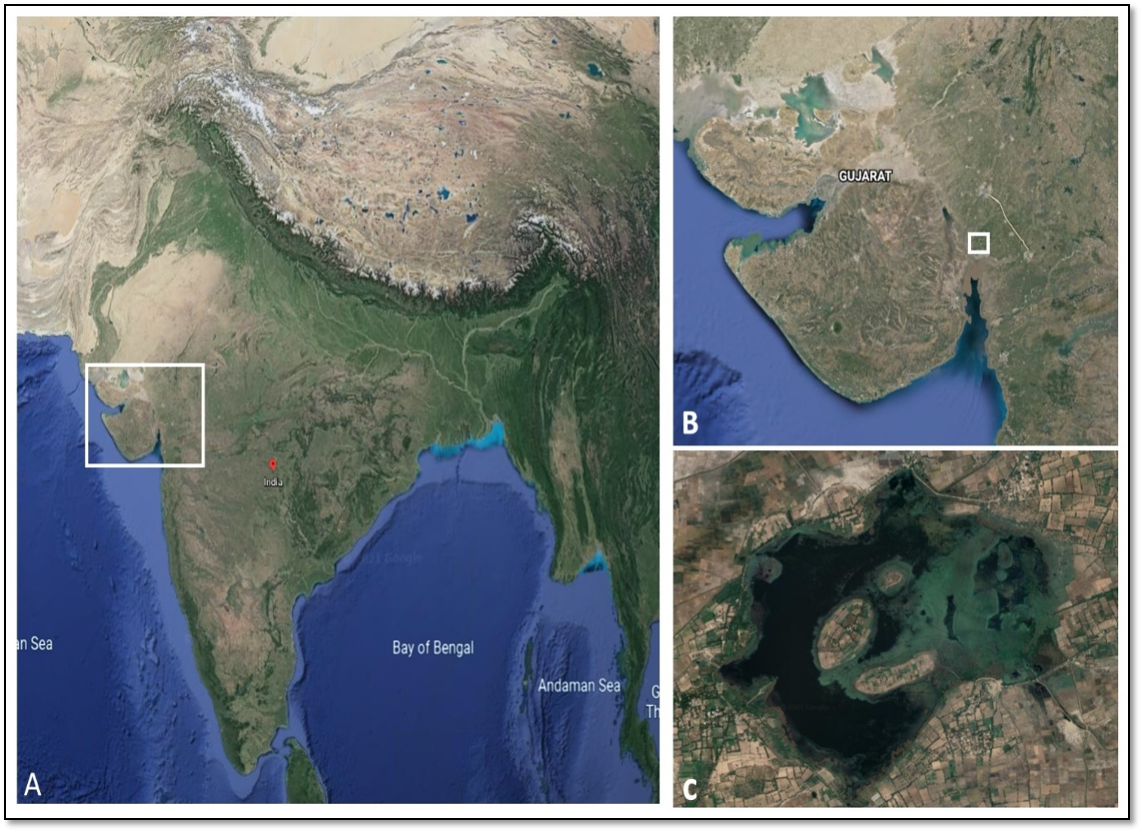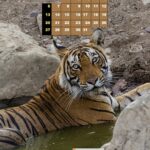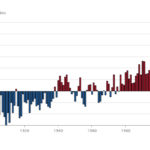Probable First Record of Indian Roofed Turtle (Pangshura tecta, Gray 1831) from Freshwater Inland Wetland, Gujarat, India
Hiren J. Chaudhari and Hiren B. Soni
P.G. Department of Environmental Science & Technology (EST),
Institute of Science & Technology for Advanced Studies & Research (ISTAR),
Vallabh Vidyanagar – 388 120 (Gujarat) India
Corresponding Author: hirenkumarjc@gmail.com
INTRODUCTION
Globally, 326 tortoise and freshwater turtle species occur in seven defined world geographical regions, such as North America, Central America, South America, Mediterranean, Sub-Saharan Africa, Asia, and Australia (Buhlmann et al., 2009). Asia is the primary region for 77 species of Tortoise and freshwater turtles of four families viz. Platysternidae (1), Trionychinae (16), Geoemydidae (53), Testudinidae (7) of Testudines Order (Buhlmann et al., 2009). The family Geoemydidae comprises of highly endangered species of Southeast Asia (Baruah, 2016). India has one of the most diverse turtle fauna with 28 species, ranked among top five countries in terms of turtle conservation in Asia and the world (Buhlmann, 2009). Moll (1987) has reported P. tecta, which is moderately common on along the banks of Narmada River of Gujarat. The previously published literature mainly focuses on the breeding of the Indian Roofed Turtle in captivity from Gujarat (Vyas, 2001).
Pangshura tecta (Gray, 1831)
The genus Pangshura comprises of small-sized turtles. India hosts six species of Pangshura genus. P. dhongoka, P. kachuga, P. smithi, P. sylhetensis, P. tecta, and P. Tentoria (Tikader, 1985). The Indian Roofed Turtle (Pangshura tecta,Gray, 1831) is the freshwater turtle belonging to the family Geoemydidae of the order Testudines. P. tecta is one of the 17 freshwater turtle species found in India (Tikader, 1985). It is one of the poorly known Indian turtles (Vyas, 2001). The entire population of this species is under abiotic and biotic constraints, and is rapidly decreasing in the wild (Vyas, 2001).
DISTRIBUTION
This species has been reported from India, Pakistan, Nepal, and Bangladesh (Das, 1995). It has a wide range in northern India, in the drainages of the Indus, the Ganges, the Brahmaputra and the Sind river systems of India and Pakistan (Smith, 1930). In the previous study (Basumatary, 2013), P. tecta was observed very rarely in Brahmaputra as well as Diffolu river in Kaziranga NP, Assam. It is also found in the Pleistocene deposits of Shiwalik Hills in the fossil form (Tilak and Sinha, 1984). They have also reported the occurrence of the same species in the Terai region of Uttar Pradesh, India. Hall (1980) has recorded the species along the Nepal-Bihar border. P. tecta has also been reported in larger freshwater bodies of Gujarat e.g. Narmada River, Gujarat (ZSI, 2000). Moll (1987) found it to be moderately common among all other reported specie of turtles from various biotic provinces of India.
HABITAT
Slow-moving rivers and stagnant water bodies like ponds, puddles, tanks, roadside ditches, and nullahs are habitat to this omnivorous species (P. tecta). Basking on banks, logs, or aquatic vegetation is common for this species. The species is generally observed to avoid locations that have been disturbed by humans. During the winter, the female individual of the species lays 4-10 eggs each per clutch on sandy banks. It feeds on aquatic plants (Ahmed, 2010). Generally, the species is found in freshwater rivers and stagnant water bodies. However, it is also found occasionally in salt-water habitats (Hossain, 1995). Das (1991) has also published one record of Indian Roofed Turtle from the estuarine environment of Sundarbans delta. Its occurrence in saltwater might be due to devastating cyclone in Sundarbans or the decreasing salinity of Arbesi river, West Bengal.
IDENTIFICATION
P. tecta can be distinguished by the presence of a distinct “roof” at the topmost part of the shell. Identification marks includes fine yellow longitudinal stripes on the neck, red or orange crescent marking near eyes. Carapace is elevated with flat sides and a strong median keel. The head is moderately small, pointed, and shorter than the orbit. The hexagonal neural plates are short-sided in front. The plastron is united with carapace by sutures. The axillary and inguinal buttresses are extensively developed, extending nearly to the neural plates, the former connected with the first rib. The fourth vertebral shield is elongated, much longer than broad and much longer than the third one. It has more or less flattened limbs with webbed digits, and forelimbs bear five claws having yellow spots in line. Top of the head is covered with smooth skin. Males are the smaller of the sexes and possess a comparatively longer tail that is thicker at the base. Males of the species possess white bands on top of the tails, while females possess yellow bands. In addition, male carapaces are darker and the irises are red as opposed to the paler carapaces and pink irises of the females.
THREATS
In the Indian State of Uttar Pradesh, certain tribal communities settled in the Terai region were found to practise a huge turtle kill, putting the creature’s existence in danger (Tilak and Sinha, 1984).
CONSERVATION STATUS
The Indian Roofed Turtle is Protected under WPA 1972 and placed in Schedule-I (Ahmed, 2010). International Union for Conservation of Nature (IUCN) has declared as Vulnerable species (Ahmed, 2010). It is also included in appendix I of Convention on International Trade in Endangered Species of Wild Fauna and Flora (CITES), which is list of species that are the most endangered among CITES-listed animals and plants (Ahmed, 2010).This is a relatively widespread species but local consumption reported. Population is also regarded as in a declining trend (Ahmed, 2010).
SITE DESCRIPTION
Kanewal Community Reservoir (KCR) is an internationally important wetland, listed in Directory of Asian Wetlands (Scott, 1989); designated as a ‘Wetland of National Importance’, and a proposed community reserve of Gujarat State, India. It is located between 22º 35’ N latitude and 72º 36’ E longitude at an altitude between 14 to 15 m above the mean sea level, covering an area of 1500 ha. It is situated nearly 60 kms from Anand, the Milk Capital of India; falls under 4-B Gujarat Rajwara region of Central Gujarat (Rodgers and Panwar, 1988). It lies in a natural depression; surrounded by embankment with a circumference of about 15 km and comprises of three islands, inhabited by fisherman community. It is having Dry tropical monsoon climate with an average annual rainfall of about 800 mm concentrated mainly in July, August and September.
Figure 1. Map showing Location of Study Site (KCR)
OBSERVATION
On 19th September, 2021, at around 9:40 am, we observed one individual of Indian Roofed Turtle under the fishing boat in shallow clear water at Kanewal Community Reserve (KCR), (22.462701 N, 72.513422 E), a freshwater reservoir managed by Gujarat Water Supply and Sewerage Board (GWSSB). As the individual was a bit inactive, we picked it up in our hands, and snapped few photographs for confirmation of its identity. Later on, the individual was released back safely in its natural aquatic habitat, not to be harmed by natural or anthropogenic stress. After referring standard published literature (Tikader and Sharma, 1985; Daniel, 2002), the species was identified as Indian Roofed Turtle (Pangshura tecta, Gray, 1831). The species is aquatic and inhabits freshwater bodies with plenty of aquatic vegetation. It is a less active species and comparatively a poor swimmer (Tikader, 1985). The abundant aquatic plant species such as Marselia quadrifolia, Hydrilla verticillata, Nelumbo nucifera and plenteous beds of Typha angustata creates a suitable habitat for the Indian Roofed Turtle.
SIGNIFICANCE OF THE RECORD
In the past, some researchers have worked only on the breeding of the Indian Roofed Turtle in its captivity in Gujarat (Vyas, 2001). In addition, previous published literature did not reveal the occurrence of this species in its natural habitat in Gujarat since last 32 years. Therefore, as there is lack of any such published record on the occurrence of the Indian Roofed Turtle (P. tecta) in its natural aquatic habitat in Gujarat, the findings of the observed species may be treated as ‘Unusual or Infrequent Occurrence’ or ‘Probable First Record’ in Gujarat, India.
Figure 2. Pangshura tecta (Gray, 1831) at Kanewal Community Reservoir (KCR)
REFERENCES
Ahmed, M.F. and Das, A. (2010). Tortoises and Turtles of Northeast India: Saving them from Extinction! Survey, Assessment of Present Status and Conservation of Tortoises and Freshwater Turtles in Northeast India. Technical Report, Aaranyak, Guwahati, India. 86 pp.
Ahmed, M.F., Praschag, P. and Singh, S. (2021). Pangshura tecta. The IUCN Red List of Threatened Species 2021:e.T46370A3005714. https://dx.doi.org/10.2305/IUCN.UK.2021
Baruah, C., Devi, P. and Sharma, D.K. (2016). Comparative morphometry and biogeography of the freshwater turtles of genus Pangshura (Testudines: Geoemydidae: Pangshura). International Journal of Pure and Applied Zoology. 4: 107-123.
Basumatary, R. (2013). The turtle fauna of Kaziranga National Park, Assam, India with notes on natural history and conservation status. Herpetology Notes. 6: 59-72.
Buhlmann, K.A., Akre, T.S., Iverson, J.B., Karapatakis, D., Mittermeier, R.A., Georges, A. and Gibbons, J.W. (2009). A global analysis of tortoise and freshwater turtle distributions with identification of priority conservation areas. Chelonian Conservation and Biology. 8 (2): 116-149.
CITES (2020). Official Website of CITES. Available at: https://cites. org/eng/app/appendices.php
Daniel, J.C. (2002). The Book of Indian Reptiles. Bombay Natural History Society, Bombay, 141 pp. (ISBN: 0195660994)
Das, I. (1991). Record of the Indian roofed turtle Kachuga tecta (Gray) from estuarine environment. Records of the Zoological Survey of India. 88 (3 & 4). pp. 357-359. (ISSN: 0375-1511)
Fritz, U. and Havas, P. (2007). Checklist of Chelonians of the World. Vertebrate Zoology, Museum fűr Tierkunde Dresden, 1864-5755, 57 (2): 149-368.
Hossain, M.L. and Sarker, S.U. (1995). Reproductive biology of Indian roofed turtle, Kachuga tecta in Bangladesh. J. Chelonian Conservation and Biology. 1 (3): 226-227.
Moll, E.O. (1987). Survey of the freshwater turtles of India. Part II: The genus Kachuga. J. Bombay Nat. Hist. Soc. 84 (1): 7-25.
Rodgers, W.A. and Panwar, S.H. (1988). Biogeographical Classification of India. New Forest, Dehra Dun, India.
Scott, D.A. (1989). Directory of Asian Wetlands, International Council for Bird Preservation, International Waterfowl Research Bureau, WWF International, Gland (IUCN), 1181 pp. (ISBN: 2-88032-984-1)
Tikader, B.K. and Sharma, R.C. (1985). Handbook Indian Testudines. Zoological Survey of India.156 pp.
Tilak, R., Sinha, N.K. and Ray, P. (1990). On new record of distribution and association of a North Indian Roofed Turtle, Kachuga tecta (Gray) (Reptilia: Testudines: Emydidae) and Freshwater Leech, Ozobranchus shipleyi Harding (Hirudinea: Ichthyobdellidae) in Uttar Pradesh Terai. Records of the Zoological Survey of India. 87 (4): 273-275.
Vyas, R. and Patel, B.H. (1993). Captive breeding of the Indian Roofed Terrapin, Kachuga tecta (Gray). J. Bombay Nat. Hist. Soc. 90 (1): 109-112.














Leave a Reply